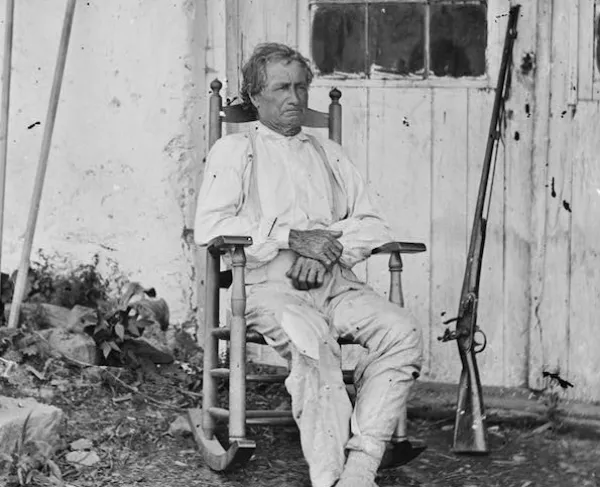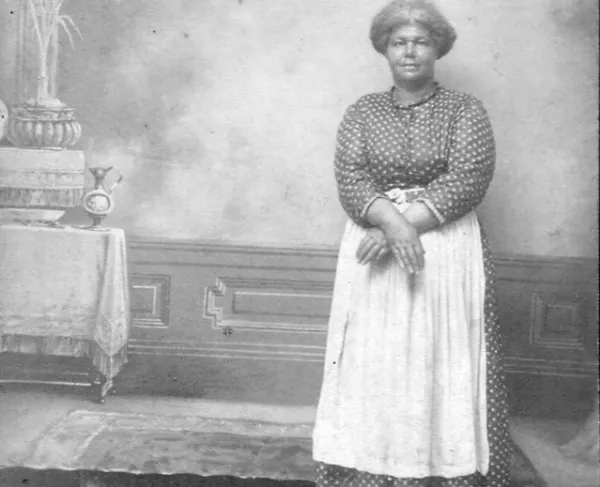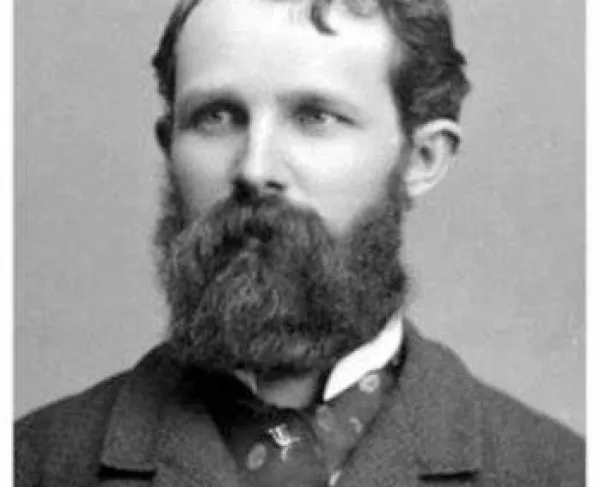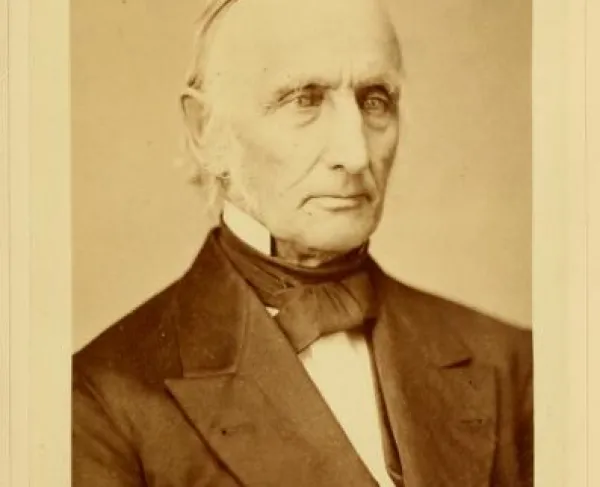John L. Burns

John Lawrence Burns was born in Burlington, New Jersey, on September 5, 1793. He is said to have begun his military service after he enlisted in the U.S. Army, allegedly fighting in multiple battles throughout the War of 1812, including the Battle of Lundy's Lane. More than 30 years later, Burns supposedly enlisted once again to fight in the Mexican-American War, then in his mid-fifties, though no record exists of his service. As the country once again plunged into war in the 1860s, Burns aimed for yet another opportunity to serve his country.
At the time of the Civil War, Burns, in his late sixties, was not deterred from joining the Union, despite his age and already-extensive military service record. With reported attempts to enlist for combat duty multiple times, Burns was consistently turned away due to his age. Instead, he served as a teamster for the Federal forces until he was relieved and sent home to Gettysburg to serve as a constable.
On July 1, 1863, the Battle of Gettysburg began, and Burns, upon hearing distant gunfire, grabbed his old musket and powder horn before heading out the door to offer his combat services to the nearest Union regiment.
Burns eventually reached the 150th Pennsylvania Infantry and requested to fight alongside the regiment. Upon judgment from the regiment’s leadership, he was sent into the woods next to the McPherson Farm to fight beside the Iron Brigade, first with the 7th Wisconsin Infantry and then with the 24th Michigan.
After the Union line started to fall back toward the Seminary, Burns was wounded in the arm, leg, and chest, giving the retreating Federals no choice but to leave him behind. Cleverly, the injured Burns decided to leave behind his rifle and bury his ammunition, which, alongside his age and strange apparel, he hoped would make him look like a civilian caught in the crossfire.
His gamble paid off when Confederate soldiers finally questioned him. Burns’s efforts to hide his weapons, along with an elaborate lie about looking for help for his ailing wife, were enough to convince the enemy of his non-combatant status. Despite having just fought against them, Burns had his wounds dressed by the soldiers before going on their way. Once alone, he crawled to a nearby house, then made his way back to his home to have his injuries treated more thoroughly.
Following the battle and Burns’s recovery, word spread of the two-time veteran’s harrowing efforts on the battlefield, sparking national acclaim. Upon learning the story of the aged sharpshooter’s endeavors, Mathew Brady sent one of his photographers, Timothy O’Sullivan, to photograph Burns at his home. His picture, accompanied by Burns’s story, launched him to near-celebrity status.
In November 1863, President Abraham Lincoln traveled to Gettysburg to deliver his address at the dedication of the Soldiers National Cemetery. While there, President Lincoln met Burns.
Burns died of pneumonia in 1872 and is buried in Evergreen Cemetery in Gettysburg. But his legacy has lived on; a monument of Burns was erected at Gettysburg and dedicated by the State of Pennsylvania on July 1, 1903, during the battle’s 40th anniversary.
We're on the verge of a moment that will define the future of battlefield preservation. With your help, we can save over 1,000 acres of critical Civil...
Related Battles
23,049
28,063
853
878





